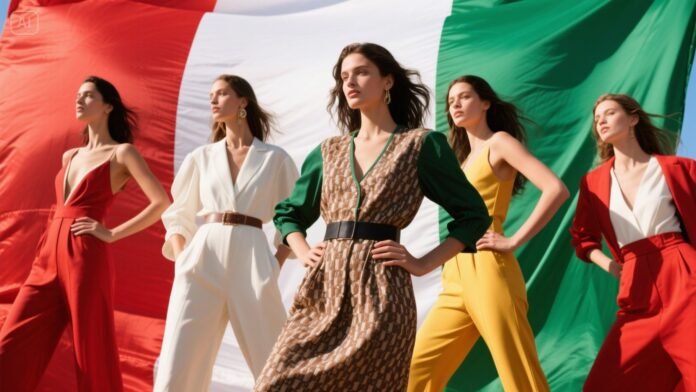Table of Contents
Introduction
Italian fashion is synonymous with elegance, craftsmanship, and a flair for the dramatic. Women worldwide admire and aspire to wear Italian designs that effortlessly combine style with functionality.
Italian fashion women are admired for their long-standing association with elegance, innovation, and timeless appeal. Italian designers have continuously raised the bar for fashion perfection, from Milan’s cobblestone alleyways to the world’s runways.
This article explores the essence of Italian fashion, delving into the most coveted designer labels, iconic styles, seasonal trends, and the sartorial confidence that comes with embracing this luxurious heritage.
| Category | Key Highlights |
| Designer Labels | Versace, Prada, Dolce & Gabbana, Armani – luxury and heritage |
| Iconic Styles | Tailored suits, bold prints, lace, minimalist elegance |
| Seasonal Trends | Oversized coats, vintage revival, metallics, romantic cuts |
| Footwear | Leather boots, sculpted heels, designer loafers |
| Accessories | Statement bags, silk scarves, oversized sunglasses |
| Fabrics | Silk, cashmere, leather – premium quality focus |
| Colors | Neutrals, black & white, rich jewel tones |
| Style Icons | Sophia Loren, Monica Bellucci, Chiara Ferragni – timeless Italian influences |
| Cultural Touches | Roman heritage, Catholic motifs, Mediterranean flair |
| Confidence | Effortless, tailored looks that express elegance and individuality |
The Allure of Italian Fashion
Italian fashion has always been a shining example of sophistication and style. It combines classical artistry with contemporary aesthetics and is renowned for its enduring appeal. Italian designers have left a heritage that women adore wearing, from the streets of Florence to the fashion runways of Milan.
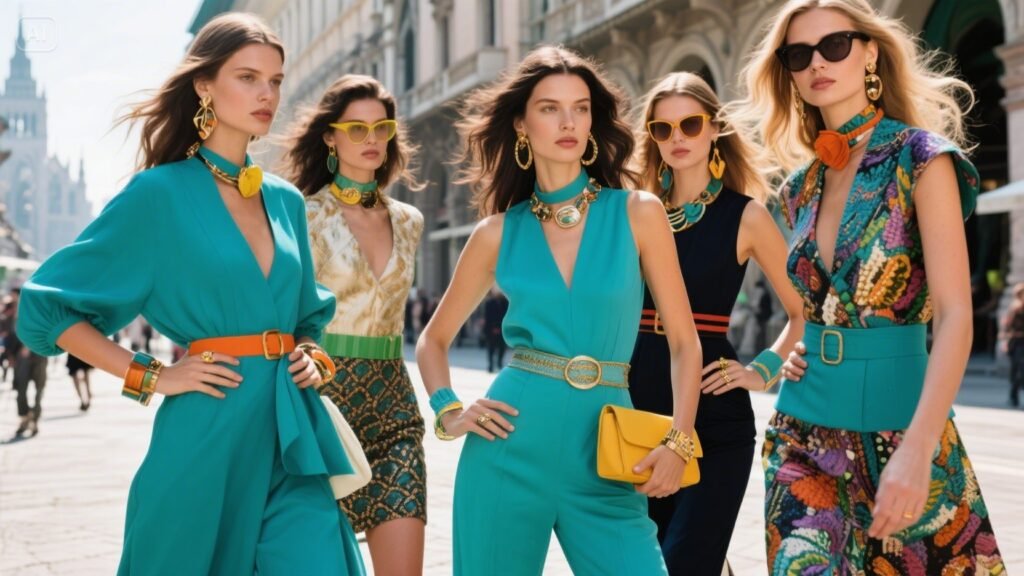
Italian fashion is a favorite among fashion fans because of its inventive designs, careful attention to detail, and emphasis on high-quality materials.
Key Characteristics of Italian Fashion
| Feature | Description |
| Craftsmanship | High-quality materials and artisanal techniques |
| Timelessness | Classic designs that transcend seasonal trends |
| Boldness | Use of vibrant colors and unique patterns |
| Versatility | Pieces that can be styled for various occasions |
| Elegance | A focus on refined silhouettes and tailoring |
Iconic Italian Designer Labels
1. Gucci
Founded in 1921, Gucci is one of the most recognizable names in luxury fashion. Under the creative direction of Alessandro Michele, the brand has embraced eclecticism, combining vintage inspirations with contemporary flair. Women love to wear Gucci for its bold prints, iconic logo, and luxurious handbags, making it a staple in casual and formal wardrobes.
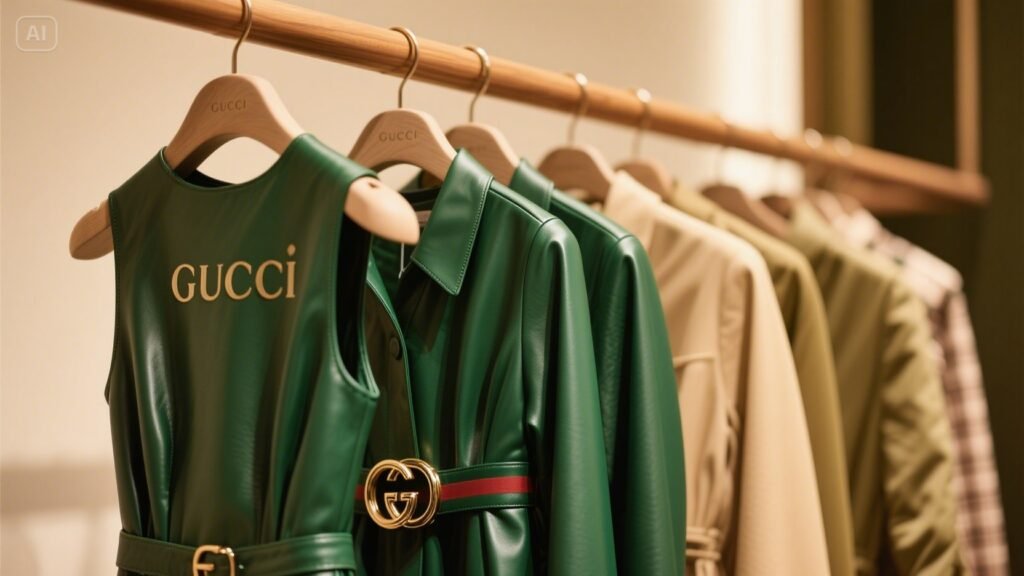
2. Prada
Prada is synonymous with modern sophistication. The brand is known for its minimalist aesthetic and innovative designs, which often challenge conventional fashion norms. Women are drawn to Prada for its chic handbags, tailored clothing, and avant-garde accessories, which exude confidence and style.
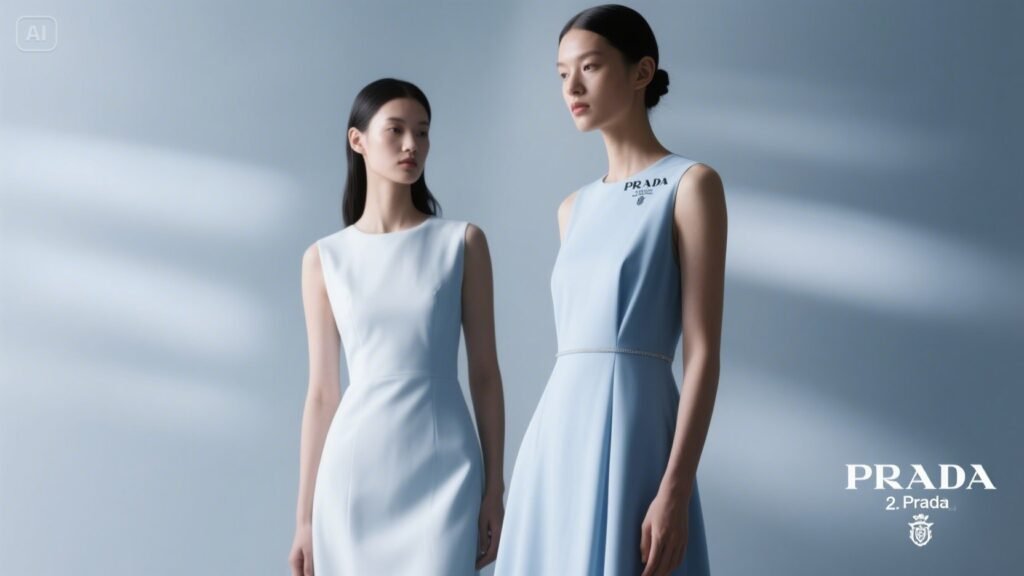
3. Versace
Versace is famous for its daring designs and glamorous aesthetic. Founded by Gianni Versace in 1978, the brand is characterized by bold colors, striking patterns, and the iconic Medusa logo. Women love to wear Versace for its statement pieces that make a lasting impression, perfect for those who wish to stand out.
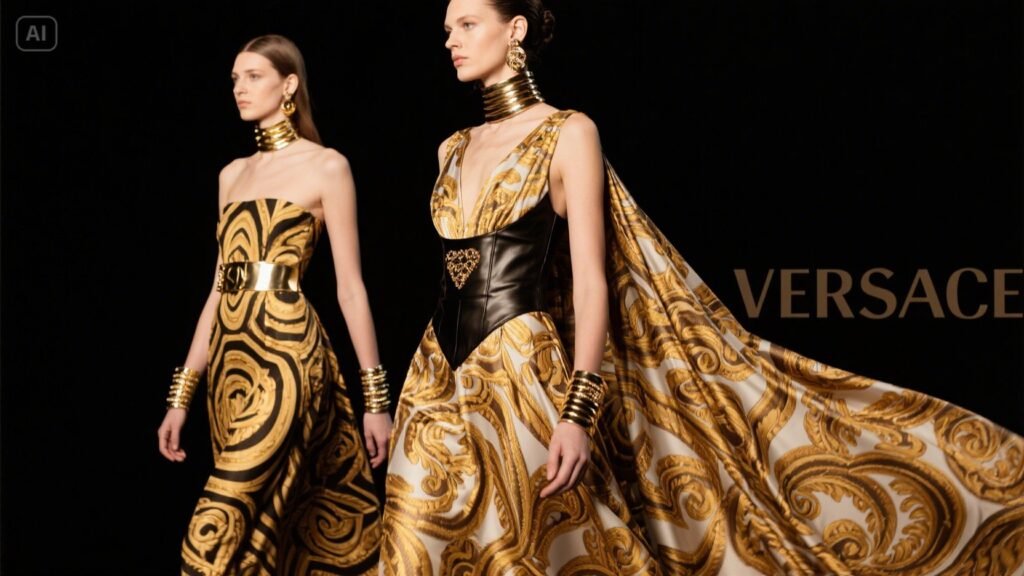
4. Dolce & Gabbana
Dolce & Gabbana honors Italian culture and heritage with romantic and colorful designs. The brand often incorporates floral prints, lace, and intricate embroidery, making its garments feel feminine and luxurious. Women adore Dolce & Gabbana’s ability to create playful and elegant pieces suitable for any occasion.
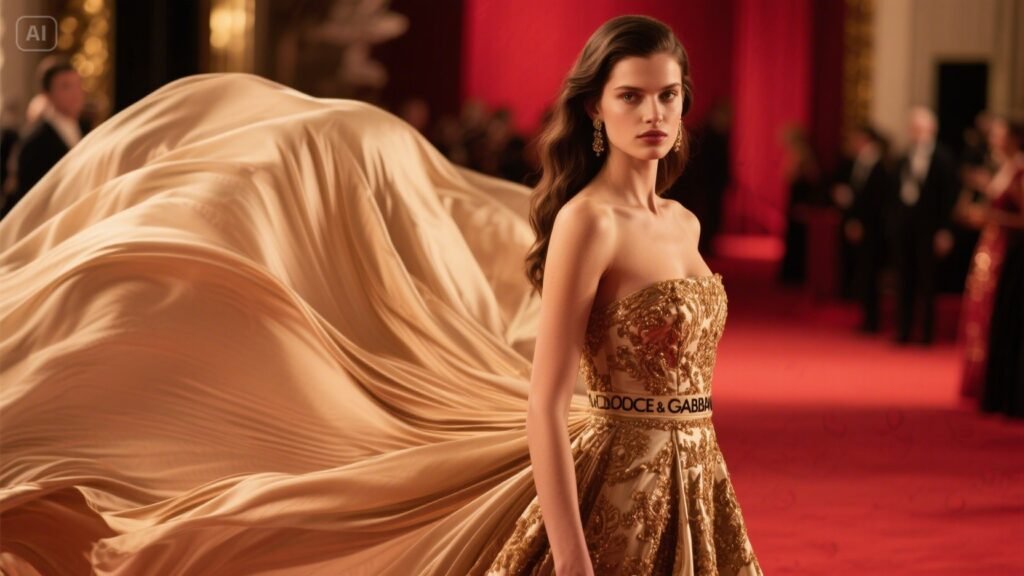
5. Fendi
Fendi has carved a niche with innovative designs, particularly in handbags and fur. The company’s recognizable Baguette bag and distinctive double F emblem are in great demand. Women appreciate Fendi’s blend of modernity and tradition, providing timeless pieces that elevate any outfit.
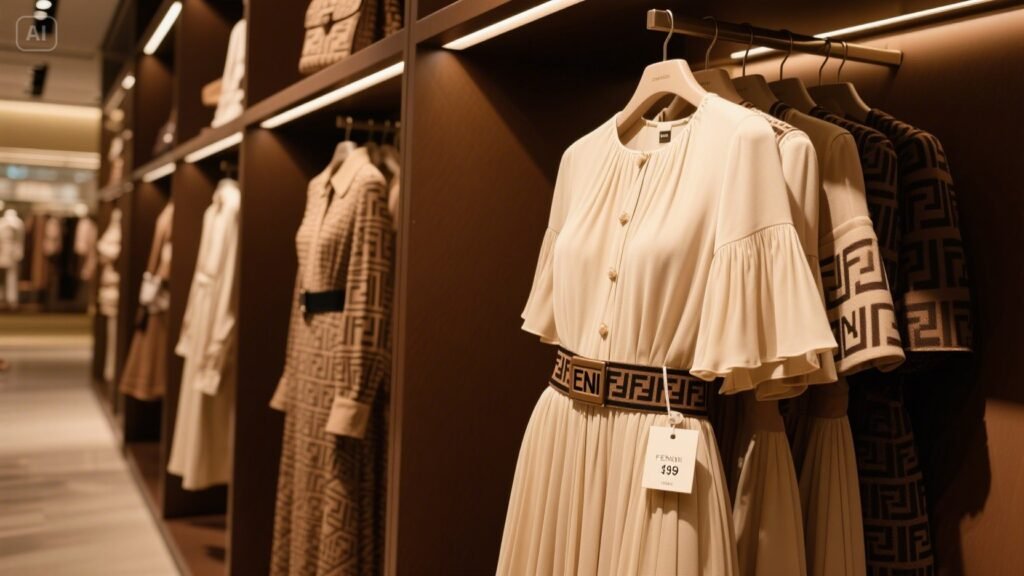
| Brand | Founded | Signature Style | Notable Features |
| Versace | 1978 | Bold and glamorous | Medusa logo, vibrant prints |
| Dolce & Gabbana | 1985 | Sicilian-inspired opulence | Lacework, religious motifs |
| Armani | 1975 | Minimalist elegance | Tailored suits, neutral palettes |
| Prada | 1913 | Sophisticated minimalism | Nylon bags, geometric designs |
| Miu Miu | 1993 | Playful and youthful | Micro skirts, eclectic patterns |
| Fendi | 1925 | Innovative craftsmanship | Baguette bags, fur craftsmanship |
| Bottega Veneta | 1966 | Understated luxury | Intrecciato weave, no visible logos |
| Valentino | 1960 | Romantic and timeless | “Valentino red,” elegant gowns |
| Missoni | 1953 | Colorful knitwear | Zigzag patterns, vibrant color schemes |
Iconic Styles: The Hallmarks of Italian Women’s Fashion
Italian fashion is characterized by certain styles that have stood the test of time:
- Tailored Suits: Pioneered by Armani, the women’s power suit symbolized empowerment in the 1980s.
- Lace and Embroidery: Dolce & Gabbana’s use of intricate lacework reflects Italy’s rich textile heritage.
- Bold Prints: Versace’s vibrant patterns and Missoni’s signature knits showcase Italy’s love for expressive design.
- Minimalist Chic: Prada and Bottega Veneta exemplify the beauty of simplicity and refined aesthetics.
Seasonal Trends in Italian Fashion
Spring/Summer Trends
Spring and summer in Italy bring a burst of color and vibrancy to fashion. Light fabrics, floral patterns, and flowing silhouettes dominate the season. Key trends include:
- Pastel Colors: Popular choices include soft hues like lavender, mint, and blush.
- Maxi Dresses: Comfortable yet stylish, maxi dresses embody the relaxed Italian summer vibe.
- Linen Fabrics: Breathable and lightweight, linen is a go-to for warm-weather outfits.
Fall/Winter Trends
As temperatures drop, Italian fashion adapts with layers and rich textures. Key trends for fall and winter include:
- Layered Looks: Combining textures and fabrics for warmth and style.
- Earthy Tones: Colors like olive green, rust, and deep brown dominate the palette.
- Chunky Knits: Oversized knitwear adds comfort and style, perfect for chilly days.
Sartorial Confidence: Italian Fashion Women
The Importance of Fit
In Italian fashion, fit is paramount. Women are encouraged to invest in tailoring to ensure their garments flatter their body shapes. A well-fitted outfit enhances appearance and confidence, empowering women to make fashion choices.
Embracing Individuality
Italian fashion celebrates individuality and personal style. Women are encouraged to mix and match pieces, experiment with bold colors, and incorporate unique accessories. This approach fosters sartorial confidence, enabling women to express their personalities through fashion.
Quality Over Quantity
Italian fashion emphasizes investing in high-quality pieces rather than a large quantity of clothing. This philosophy encourages women to curate a wardrobe filled with versatile, timeless pieces that can be styled in various ways.
Conclusion
Italian fashion is a captivating world where elegance meets creativity, offering women diverse styles and designs. With iconic designer labels, timeless styles, and seasonal trends, Italian fashion continues to inspire and empower women globally. By embracing the principles of fit, individuality, and quality, women can navigate the realm of Italian fashion with confidence and style.
Whether you’re drawn to Versace’s boldness or Prada’s sophistication, the journey through Italian fashion involves discovery and personal expression. With each piece worn, women embrace the beauty of Italian design and the sartorial confidence that comes with it.
Apart from that, if you are interested to know about “The 23 Layers Approach: How Boutique Event Planning Agencies Deliver High-Impact Brand Experiences” then visit our “Fashion” category.
FAQs
Top brands include Prada, Versace, Dolce & Gabbana, Giorgio Armani, and Valentino. These labels are known for their distinctive aesthetic and craftsmanship.
Italian women favor chic and minimalist outfits — think tailored blazers, high-waisted trousers, crisp shirts, and designer accessories, often styled with bold confidence.
Trends vary, but recent ones include oversized outerwear, rich textures (like velvet or leather), bold prints, and vintage-inspired accessories.
Italian fashion blends both. Even casual looks tend to be elevated with refined details, tailoring, or luxe materials. There’s a strong emphasis on being well-dressed, even in laid-back settings.














